Hello,
I am introducing (and asking for input) on my design for what I call "Aerated Deep Flow Technique"; a hybrid of DFT and compost tea brewers (re air lift). A few people have contacted me and asked for my design plans, which are in 3D (ex., you can look inside the reservoir, tray and air lift!), so instead of sending each person my designs, I will post/upload everything here.
I have been designing a water culture hydroponic system ideal for use with (a) conventional growing; (b) using only microbes and aerated compost tea for fertilizers (i.e., 'biological organic' growing); (c) using bioponics (ex., talapia); and (d) bioponics with biological organics (mixing b and c).
My goals are simple:
I have plans to run trials of conventional vs. biological organic vs. biopoinc/biological organic growing; for all sorts of measurable plant responses (using cannabis of course). To that end, I have been working on ideal fertilizer solutions for cannabis using inorganic salts (from salt compounds). As well as working on making the best aerated compost tea I am able, verifying with my microscope. I have yet to have raise talapia.
My goal is to try and take as many variables out of the equation as possible when studying plants (ex., cannabis). Especially with respect to various growing methods (inorganic vs. biological organic) and styles (ex,. FIM vs. LST). To do that, the plants need to be grown using as similar conditions as possible, and root conditions can greatly impact plant growth (ex., hydroton vs. peat moss; water culture vs. soilless culture).
Air lift feature:
The air lift will be used in place of a water pump, as to not injure microbes, and to increase DO. The design is simple: air bubbles (from an air diffuser) are used move water from the reservoir to the tray. Gravity will cycle the water back to the reservoir. Here are two YouTube videos that will give a better idea of how an air lift works (the first one does a good job explaining):
Notes:
Anyway, enough jibber jabber. Below are the screen shots that tell the most, they should tell everything that is needed for my design.
I uploaded my Google SketchUp 3D design, for my ADFT system, to this post. Download the file, rename from "ADFT-beta.txt" to "ADFT-beta.7z", then use 7zip (or WinRar) to decompress the file. If Google SketchUp is installed on your system, simply double click on the file "ADFT-beta.skp". The SHA-1 hash of the file "ADFT-beta.txt" is: 2C8AB5C07688AF7780808F1B2606434B4DB31DCE (that can be used to verify correct download of file).
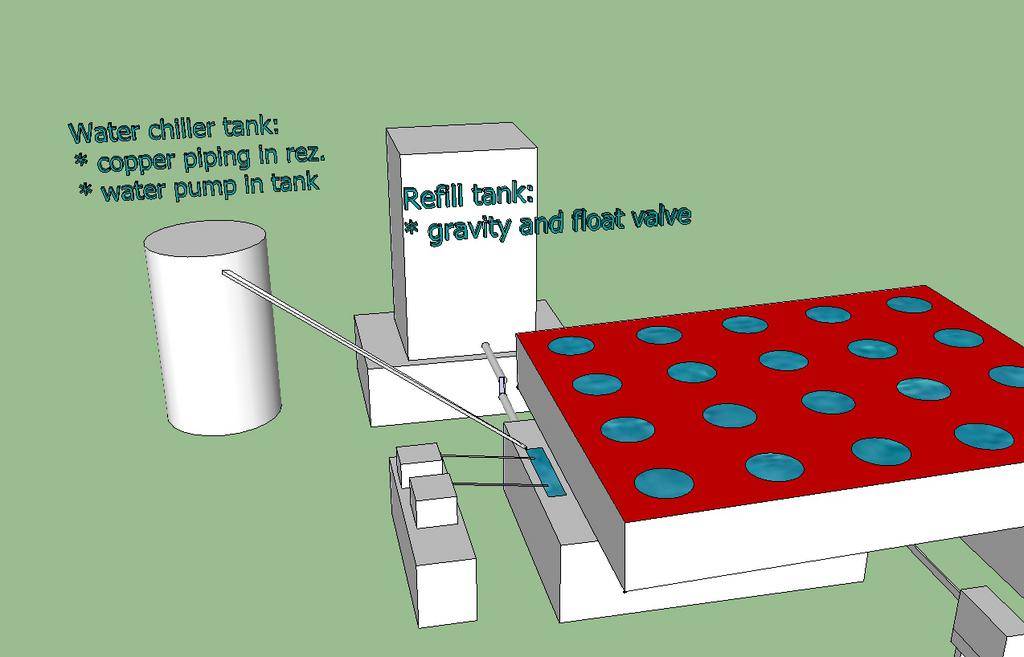
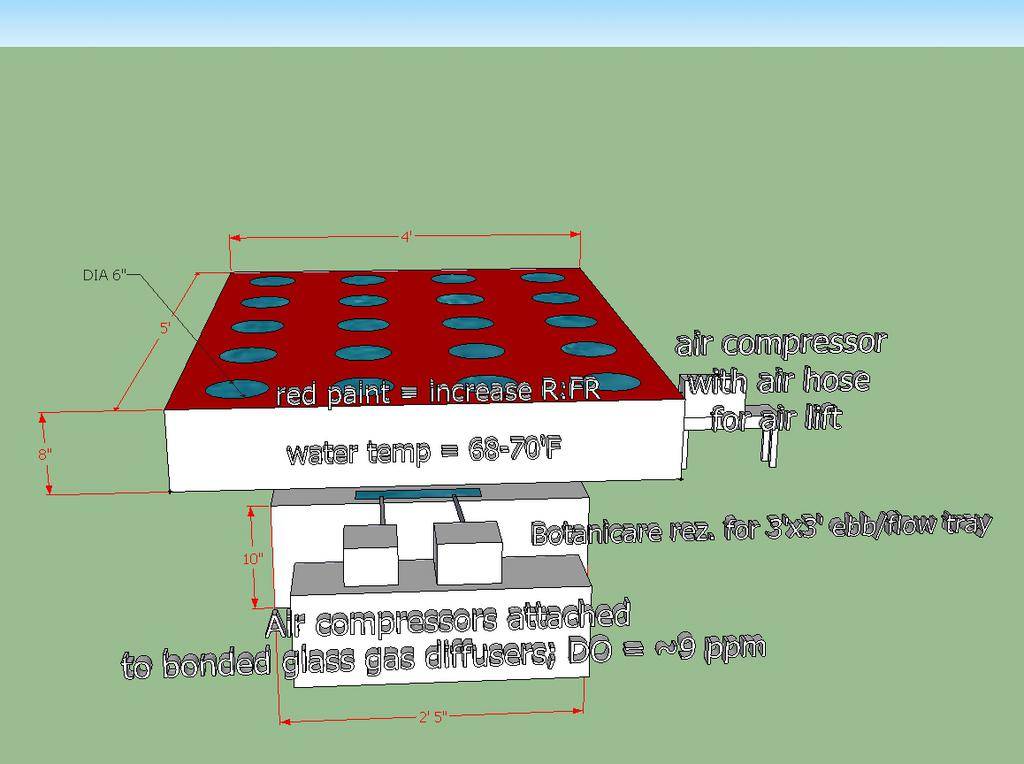
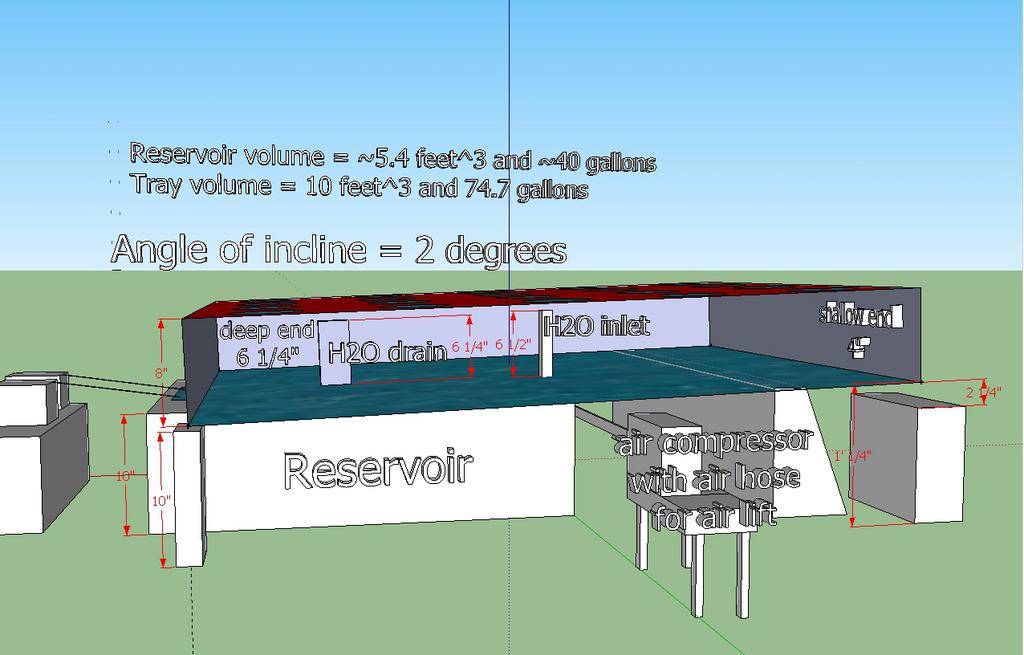
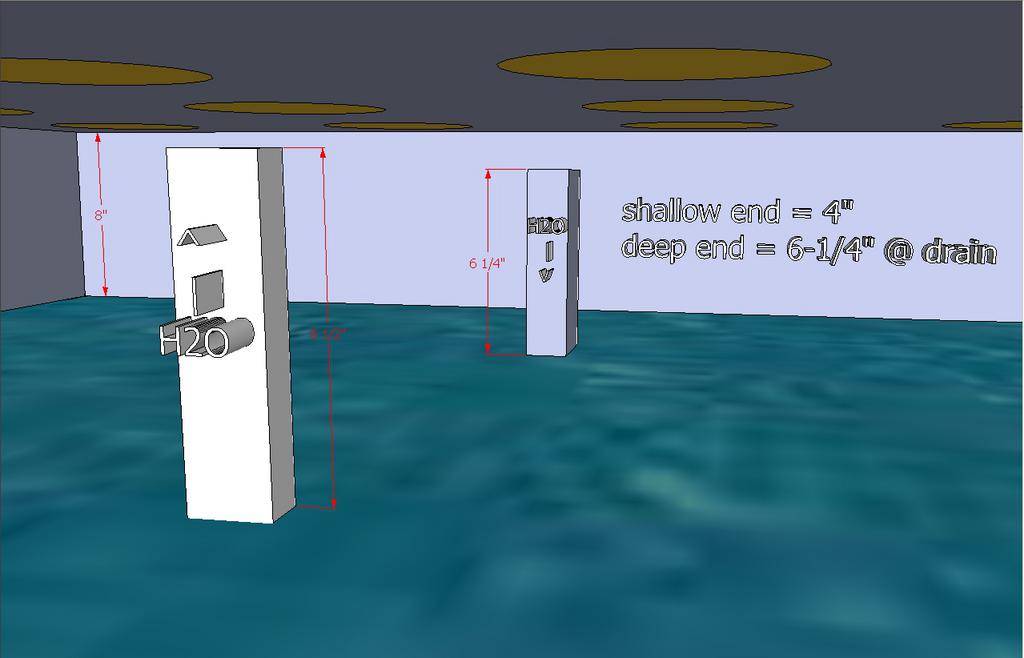
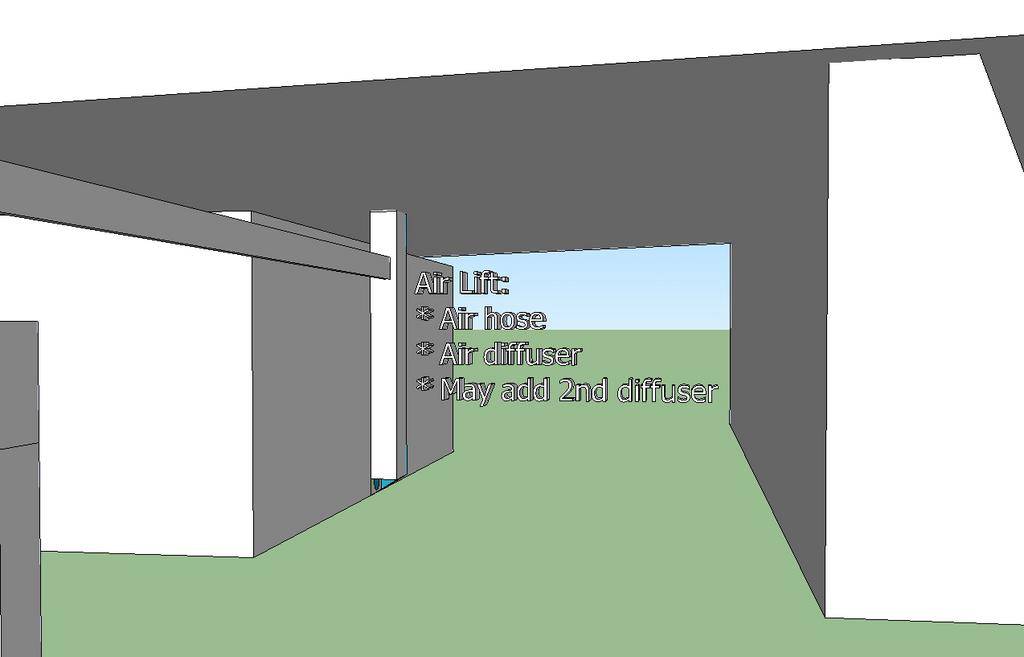
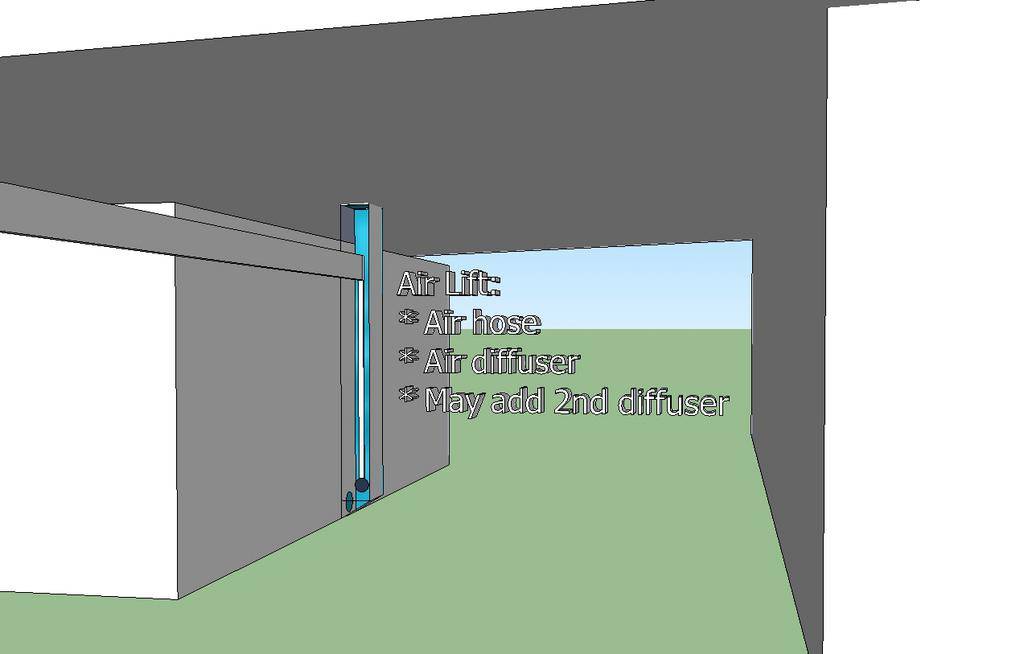
I am introducing (and asking for input) on my design for what I call "Aerated Deep Flow Technique"; a hybrid of DFT and compost tea brewers (re air lift). A few people have contacted me and asked for my design plans, which are in 3D (ex., you can look inside the reservoir, tray and air lift!), so instead of sending each person my designs, I will post/upload everything here.
I have been designing a water culture hydroponic system ideal for use with (a) conventional growing; (b) using only microbes and aerated compost tea for fertilizers (i.e., 'biological organic' growing); (c) using bioponics (ex., talapia); and (d) bioponics with biological organics (mixing b and c).
My goals are simple:
- Few moving parts for reliability and low cost
- DO of at least 8 ppm (mg/L; ideally 9-10 ppm) at roots, through all water temps (ex., for fish temp should be ~75-78'F)
- No use of water pumps that can injure and hinder microbes
- Sufficient water flow rate, to help keep DO at 8-10 ppm.
- Sufficient 'head room' between water and bottom of lid, at least 1/2" is needed for plants to develop copious "air roots", if RH at roots stays high.
- Passive reservoir refill system using float value for automated addition of water and fertilizer (i.e., "refill fertilizer solution", ex., 1/3 strength of "starter fertilizer solution"), or microbes, to the reservoir.
- Easy to access to water in reservoir.
- Using things I have at home, ex., Bontanicare reservoir for 3'x3' ebb/flow tray, lumbar, air compressor, etc.
I have plans to run trials of conventional vs. biological organic vs. biopoinc/biological organic growing; for all sorts of measurable plant responses (using cannabis of course). To that end, I have been working on ideal fertilizer solutions for cannabis using inorganic salts (from salt compounds). As well as working on making the best aerated compost tea I am able, verifying with my microscope. I have yet to have raise talapia.
My goal is to try and take as many variables out of the equation as possible when studying plants (ex., cannabis). Especially with respect to various growing methods (inorganic vs. biological organic) and styles (ex,. FIM vs. LST). To do that, the plants need to be grown using as similar conditions as possible, and root conditions can greatly impact plant growth (ex., hydroton vs. peat moss; water culture vs. soilless culture).
Air lift feature:
The air lift will be used in place of a water pump, as to not injure microbes, and to increase DO. The design is simple: air bubbles (from an air diffuser) are used move water from the reservoir to the tray. Gravity will cycle the water back to the reservoir. Here are two YouTube videos that will give a better idea of how an air lift works (the first one does a good job explaining):
- https://www.youtube.com/watch?v=vicfxM6O27o
- https://www.youtube.com/user/claywade77#p/a/u/0/HF_JqGyPXXM
Notes:
- In the first screen shot below, the cold water reservoir (i.e., "water chiller tank") and the refill tank are not to scale.
- In the third screen shot below, the horizontal and vertical lines are axis lines, I forgot to make them hidden, sorry!
- In the third screen shot below, the volumes listed are for the actual volume of water, not the total volume of the reservoir and tray.
- I would prefer to use a reservoir as along as the table, I am using the only reservoir I have on hand (the one in my designs)
- I have a water chiller I use with IceBoxes, but I plan to also use the cold water reservoir (from the chiller) to cool the reservoir of my ADFT system. I plan to use copper piping/coil in the ADFT reservoir, connected to the cold water reservoir via. piping/hosing, where a water pump moves cold water through the copper piping to chill the ADFT reservoir. (i'm going to use the kind of piping made for hydro reservoir ... )
- I am thinking about changing the angle of incline from 2 degrees, to 1 degree.
- In the screen shots below, from Google SketchUp 3D rendering application, I forgot to add one foot of space between the reservoir and tray. The space will be needed when I test bioponics with aerated compost tea.
Anyway, enough jibber jabber. Below are the screen shots that tell the most, they should tell everything that is needed for my design.
I uploaded my Google SketchUp 3D design, for my ADFT system, to this post. Download the file, rename from "ADFT-beta.txt" to "ADFT-beta.7z", then use 7zip (or WinRar) to decompress the file. If Google SketchUp is installed on your system, simply double click on the file "ADFT-beta.skp". The SHA-1 hash of the file "ADFT-beta.txt" is: 2C8AB5C07688AF7780808F1B2606434B4DB31DCE (that can be used to verify correct download of file).
Attachments
Last edited:




